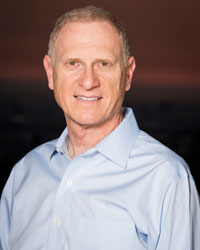What Makes a Leadership Program a Success?
Posted on: June 19, 2017 by Healthcare Business Today Team
By Dennis Eder
![]() [Printable Version]
[Printable Version]

Among the things I have enjoyed most during my three decades as a healthcare executive and consultant has been the past five years serving as a senior leader with the Practice Change Leaders for Aging and Health (“PCL”) program. Funded by The John A. Hartford Foundation Inc. and The Atlantic Philanthropies, this program’s singular purpose is “to develop, support and expand the influence of organizational leaders who are committed to achieving transformative improvements in care for older adults.”
Under the direction of MacArthur Fellow and University of Colorado professor Eric A. Coleman, M.D., MPH, this program brings together a team of senior leaders who are not only experts in the field of geriatrics and community-based services, but who love to share their experience to each year’s cohort of change leaders. How we get to achieving the mission may evolve, but it is all about helping mid-career healthcare/community services professionals figure out how to develop and execute on improvements in care for elders.
Like so many of my peers, I’ve been involved both as a learner and a teacher in many other healthcare-related leadership programs, some of which have been worthwhile and some of which, sadly, have not. So what makes the PCL program so special, and what can other leadership programs learn from its success? Here are four takeaways learned from the trenches.
Ratio of Senior Leaders (“faculty”) to Change Leaders (“learners”)
The Practice Change Leaders program has 12 senior leaders and targets just ten change leaders. This extraordinarily high ratio of faculty to learners helps accelerate the learning process while also providing for (and encouraging) ongoing two-way learning and dialogue. In that regard the change leaders teach the senior leaders almost as much as the other way around.
The core of the interaction between the two groups is the “pod” – small group sessions that involve both in-person meetings three times per year as well as multiple phone calls in between. In the pod sessions the change leaders describe their change projects/ business plans and receive direct and sometimes uncomfortable feedback from their peers and the senior leaders (it is not unusual for a change leader to receive advice that their project isn’t going to work and that they need to go back to the drawing board). In that regard we not only spend a good deal of time focused on business plan development and presentation, but we also devote a meaningful amount of time on career development related to the project and plan.
Pressure on the participants to perform – we’re all being paid
Because of the generosity of the two funding sponsors, everyone receives payment for their work. The change leaders receive a $45,000 stipend to develop their business plans, and every senior leader receives a modest honorarium for attending each of the three-day in-person sessions spread out throughout the year. Being paid puts pressure on everyone to perform. Last year we had a change leader ask how she was supposed to get the business plan created when she had a “real job.” We clarified her thinking by pointing out that the PCL program was an extension of her real job, and she was being paid a generous sum to perform!
Participants want to be there
Acceptance to the PCL program is very competitive. Thus, the change leaders who are ultimately selected very much want to be part of the program. We have had a number of applicants turned down but encouraged to reapply. One of them was a good friend and former colleague of mine who, when she finally got into the program, she said it was a career highlight.
In this regard PCL contrasts with other programs where all applicants are accepted as long as their place of employment pays the fees. My experience in this context is that over 25 percent of the program attendees don’t really engage or care about being there. They are just getting a “box checked” as part of their career journey. In the PCL program, there are no “free riders.”
Consistency and quality of senior leaders
The senior leaders involved in the program are all highly experienced experts in the field of health services for the older population yet bring a diverse background to the program. A number of the leaders are either practicing or recently retired physicians; but there are also nurses, social workers, healthcare policy experts, and even one broken-down ex-CPA (me). We also bring in extraordinarily talented speakers on relevant topics. And, at the time of the presentation of the business plans by the change leaders, a panel of outside experts review the pitches so as to bring even greater perspective and feedback into the process.
In the broader view providing a mere ten motivated change leaders with the tools and guidance they need to be change agents and boundary spanners might appear to represent a small drop in the bucket given the nation’s large and pluralistic healthcare system. But, according to the program’s most recent survey, the 64 responding alumni have collectively influenced the lives of 3.4 million older adults and the practices of 47,000 health professionals. These numbers show the positive influence that such a program can have and are an encouraging sign as our nation continues to age and healthcare challenges continue to mount.
To learn more about the program and how to become a participant, go to www.changeleaders.org.
Dennis Eder is managing partner of Strategic Health Group, which provides healthcare organizations with consulting services across a wide spectrum of needs including strategic planning, new health plan development, market and product expansion, strategic partnering and affiliation, and interim executive management. www.strategichealthgroup.com.
